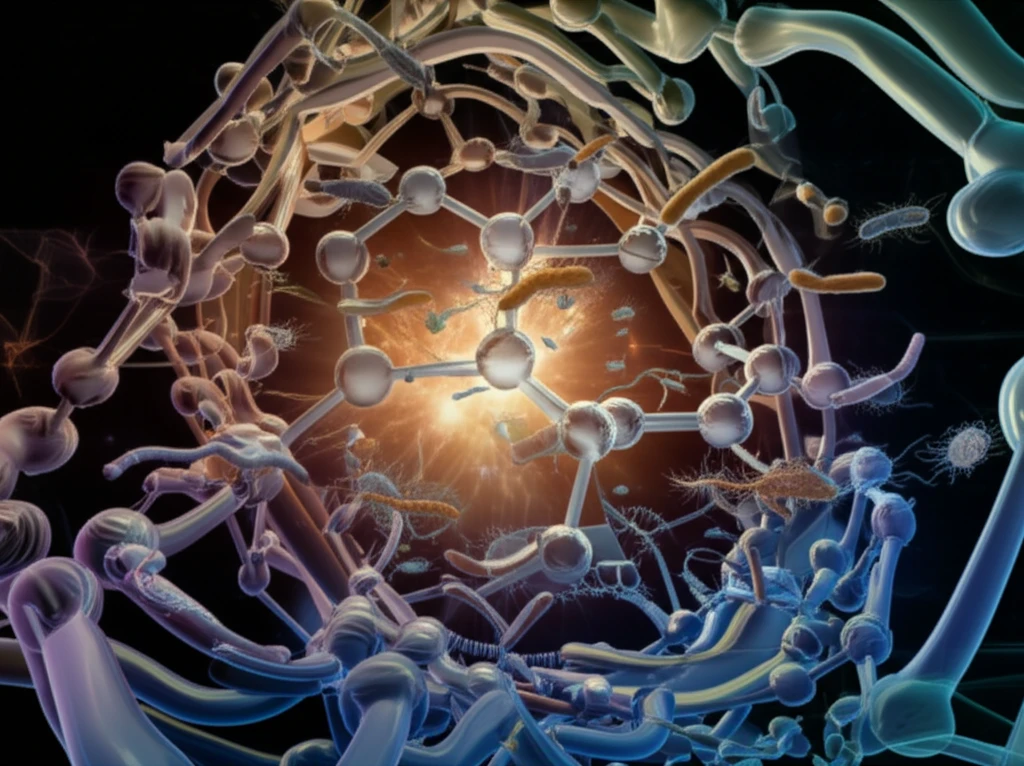
Decoding Drug Resistance: How Understanding Bacterial Enzymes Can Lead to New Antibiotics
"Researchers uncover the structure of a key enzyme in Neisseria gonorrhoeae, paving the way for targeted drug development to combat antibiotic resistance."
Neisseria gonorrhoeae, the culprit behind gonorrhea, remains a significant global health concern. The alarming rise of antibiotic-resistant strains threatens effective treatment, creating an urgent need for alternative therapeutic approaches. Scientists are now focusing on identifying and targeting essential bacterial enzymes to develop new drugs that can bypass resistance mechanisms.
One such enzyme is 4-hydroxy-tetrahydrodipicolinate reductase (DapB). DapB plays a vital role in the meso-diaminopimelate pathway, which is essential for bacteria to produce lysine, a building block for proteins and cell walls. Because mammals don't have this pathway, DapB is an ideal target for antibiotics – drugs that will selectively harm bacteria without affecting human cells.
A recent study published in Biochemical and Biophysical Research Communications unveils the first detailed structure of DapB from N. gonorrhoeae. This breakthrough provides crucial insights into how DapB interacts with essential molecules, offering a blueprint for designing drugs that can effectively shut down its function and combat gonorrhea.
A Closer Look at DapB: Structure and Function

The research team successfully determined the three-dimensional structure of NgDapB using X-ray crystallography. This allowed them to visualize the enzyme's architecture at a high resolution of 1.85 Ångströms, revealing key features of its structure.
- Tetrameric Structure: Like other bacterial DapB enzymes, NgDapB assembles into a tetramer, a complex of four identical protein subunits. This structure is crucial for its function.
- Two Key Domains: Each subunit contains two domains: a coenzyme-binding domain, which interacts with molecules like NADH and NADPH that provide the energy for the enzymatic reaction, and an oligomerization domain, responsible for assembling the tetramer.
- Active Site Insights: The structure reveals important details about the active site, the region where the enzyme binds its substrate and carries out the chemical reaction. This information is essential for designing drugs that can specifically target and inhibit the enzyme.
The Future of Antibiotic Development
This structural understanding of NgDapB opens exciting new avenues for combating N. gonorrhoeae infections. By using the 3D structure as a guide, scientists can design molecules that:
<ul><li><b>Specifically bind to the active site of NgDapB,</b> preventing it from carrying out its essential function.</li><li><b>Disrupt the tetrameric assembly</b> of the enzyme, rendering it inactive.</li><li><b>Exploit the unique conformational changes</b> that occur during the enzymatic reaction to create highly targeted inhibitors.</li></ul>
The battle against antibiotic resistance requires innovative strategies and a deep understanding of bacterial mechanisms. By illuminating the structure and function of DapB, this research brings us closer to developing new, effective antibiotics that can overcome resistance and safeguard public health.
